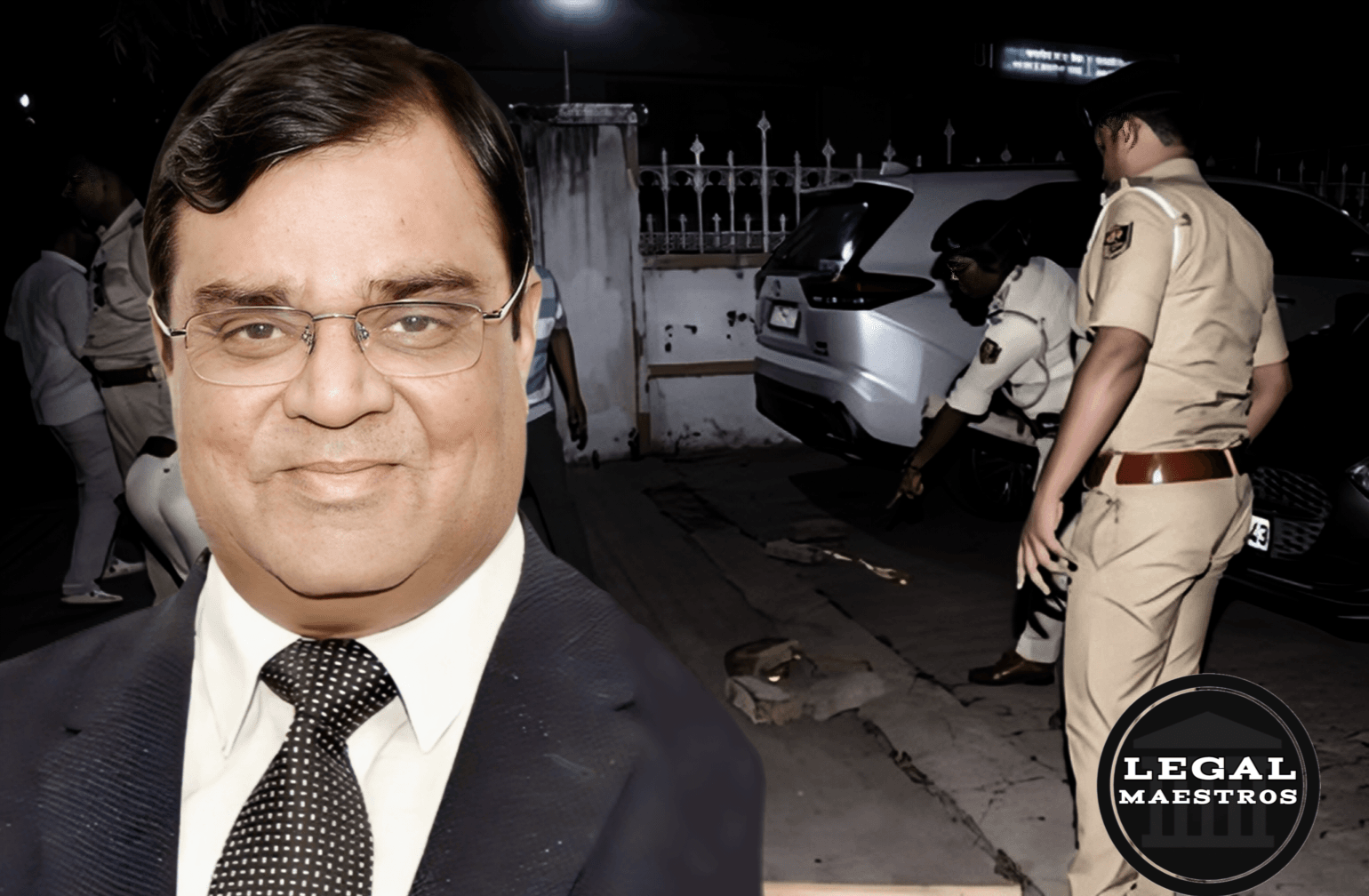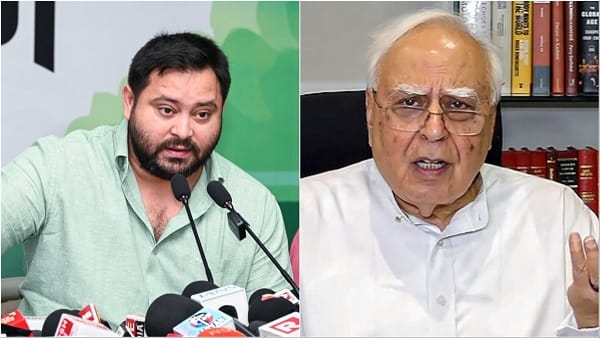
Patna, Bihar The police encounter in Patna, which led to the death of Vikas alias Raja, an allegedly accused in the murder of Gopal Khemka, an industrialist, and who was also the conspirator has raised a number of legal issues related to the action of the police in such operation. The Bihar police have claimed that the shooting was in self-defence and such will be investigated fully according to the laid down law.
The Incident: Killing of a Suspect Vikas alias Raja
On the 29th day of July, 2025 in the wee hours of the morning the encounter occurred in the Pir Damariya Ghat area in Patna and Vikas alias Raja who was 29 years old was killed. Bihar Police Headquarters reported the following as per Station House Officer of Malsalami Police Station that the incident happened near 2:45 AM. According to police authorities; Vikas, a suspected member of a possible conspiracy in the Gopal Khemka murder case tried to escape by firing at the police officers who approached him. The police retaliated back and he was killed. None of the police involved was injured. According to sources, a pistol, an empty cartridge and one live cartridge had been found on the floor. Police believe that Vikas has provided weapon with which Khemka was murdered. His body was taken to a government hospital in Patna so that a post mortem can be conducted on his body. Vikas alias Raja was also said to have a history of criminal activities that involve murder of several people, loot cases, and Arms Acts.
Gopal Khemka Murder Case
Gopal Khemka, a leading industry person was murdered in a shooting at the Gandhi Maidan area of Patna on Friday, July 4, 2025, around 11.40 PM outside his home in Main Gandhi Maidan locality. A bike rider gunned him down as he was proceeding back home after spending time in the Bankipore Club. This event was seven years after his son named Gunjan Khemka was also killed in Hajipur in 2018. After the murder of Gopal Khemka, a meeting of Bihar Chief Minister Nitish Kumar was convened to discuss the law and order situation and directed the officials to move fast in matters of investigation. SIT which is Special Investigation Team was formed with SP City Central, Diksha, leading it.
For any queries or to publish an article or post or advertisement on our platform, do call at +91 6377460764 or email us at contact@legalmaestros.com.
The alleged shooter Umesh Yadav had been previously arrested by a combined force of Special Task Force (STF) and Patna Police before the confrontation. One more suspect, Ashok Sao, an iron trader, was later arrested as the suspected mastermind, who had allegedly paid Rs 10 lakh to get the killing done, perhaps, because of a business rivalry. Police also bear a possible connection with a business man who is detained in Beur Jail.
Indian Legal Framework of Police Enounters
The Indian techniques of police encounters are based on the right of defending the property by the Indian Penal code (IPC) and a collection of guidelines that are provided by the Supreme Court as well as the National Human Rights Commission (NHRC).
IPC-Right to Private Defense (IPC)
The section 96-106 of IPC deals with right of private defense. Section 96 says that nothing which is “done in the exercise of the right of private defence” is an offence. This right can also be applied to protecting his body, and the body of any other human against any kind of offence that may challenge the human body. Necessary force may be desired to prevent an impending danger; and that too, until death- even in the latter case the law is applicable in case of a reasonable apprehension of death or grievous hurt. This right, however, is not regarded as absolute but subject to some restrictions such as there should not be any harm beyond what is essential.
Besides, Section 46 of the Code of Criminal Procedure (CrPC) also provides that a police officer is authorized to use a reasonable force including death so as to make an arrest, in case the offender is rapely resisting/attempting to evade arrest of a person charged with an offense that has a death sentence/life imprisonment.
Supreme Court Guidelines of Police Encounter
In India, the Supreme Court, and especially in the matter of People Union For Civil Liberties PUCL v. State of Maharashtra (2014), has framed detailed guidelines in the investigation of police encounters in which death occurs. These guidelines are imperative to all the authorities in accordance with Article 141 in the Indian Constitution and are supposed to guarantee comprehensive, productive and autonomous investigations. Some notable points are:
- Means of recording Tip-off: any information or tip-off of moves of criminals that would cause a serious crime has to be stored in writing, ideally in a case diary.
- FIR: In the event where death occurs because of the use of a firearm by the police party in following up the tip-off, then an FIR is to be registered immediately and send to the court under Section 157 of CrPC.
- Independent Investigation: Investigation of such deaths should be by an independent body i.e. an independent agency like the State CBCID or a police team of a police station working under the direction of an officer of superior rank.
- Magisterial Inquiry: As per the provisions of the Section 176 of the CrPC, all the deaths caused in the police action should be followed by mandatory magisterial inquiry which by all means is to be conducted as soon as possible and ideally within three months of such incidences. It should investigate the family members of the deceased, the witnesses of the scene, and the police reports.
- Informing NHRC/SHRC: The national Human Rights Commission (NHRC) or state Human Rights Commission (SHRC) shall be informed about the encounter death immediately that is within 48 hours and a complete report is to be filed within three months.
- Medical Aid: Hurt individuals should be given instant medical help, and their statements together with a medical fitness certificate should be received, by a Magistrate or Medical Officer.
- Protection of Evidence: The crime scene should be secured to avert the destruction of evidence.
- No Out-Of-Turn Promotions: There should be no out-of-turn promotions or gallantry awards to officers involved in the encounter till the authenticity of the encounter is proved.
- Immediate Prosecution and Disciplinary Action: Instant prosecution and disciplinary action should be taken against the guilty delinquent officers, who are accused in magisterial inquiry or police investigation.
NHRC Guidelines
National Human Right Commission has also come up with the same guidelines, by stating that it is high time we record the information, independent investigations, magisterial inquiry, and report every death under police action. The NHRC directives highlight that the police officers do not have automatic authority to deprive an individual of his life and death during an encounter which was not on the right of the private defense would be culpable homicide.
The Rights of the Accused when held by the Police
Despite involving serious crimes, accused persons have the basic rights in the Indian law and the Constitution. Such rights are:
- Right to know the reason of arrest: Under Section 50(1) of the CrPC and clauses 22(1) of the Constitution.
- The right of production before Magistrate within 24 hours: is provided under 57 of the CrPC.
- Right to access a practitioner of law of his/her choice: Granted in Article 22(1) of the Constitution.
- Right to be free of torture and cruel, inhuman or degrading treatment: Under Article 21- the right to life and personal liberty.
- Right to medical examination: To eliminate the possibility of carrying out of physical abuses in custody.
- Right against Forced confessions: It has been provided under section 24 of the Indian evidence act that no confession is admissible where it is obtained by means of duress.
- Right to know bailable or non-bailable offence: In the case of bailable offence, under Section 50(2) of the CrPC.
- Right to inform relative or a friend about arrest: Section 50A of the CrPC.
Current investigation and legality Ongoing Investigation and Legal Compliance
When considering the encounter of Vikas alias Raja, the Bihar Police will be discussed incriminatingly under these set legal targets. This is because the post-mortem report, the magisterial inquiry and any separate investigation done will be important in ascertaining whether the police action was legal. It will be of paramount importance that all the guidelines by Supreme Court as well as NHRC such as registration of an FIR of the encounter itself and a probe on its own will be followed as it will bring about transparency and accountability in such a high profile case. The legal issues that are associated with this encounter create the significance of cardinal observance of due process and human rights, even in the case of alleged criminals.





1 thought on “Gopal Khemka Murder: Legal Questions Surround Bihar Police Encounter of Accused Conspirator”